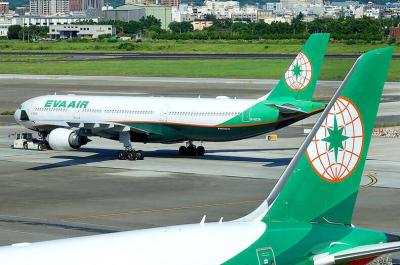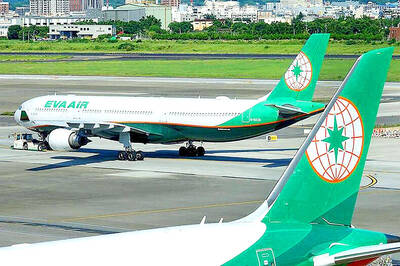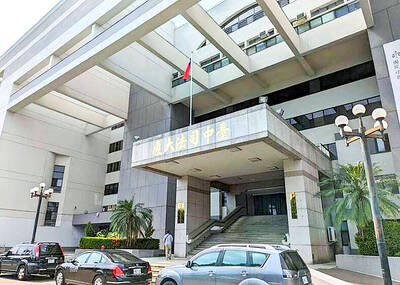Taichung businesses and officials have expressed the need for government regulations on karaoke booths that have popped up in the commercial district surrounding Taichung First Senior High School.
Today’s consumers have diverse needs, said Lin Yu-lan (林幽蘭), the director of planning at Pacific Department Store’s Fengyuan (豐原) Mall, which in May installed a karaoke booth.
If people want to relieve stress after school or work, all they need to do is close the doors of the booth — which is 1 ping (3.3m2) and fits a maximum of four people — to shut themselves away from the world, she said.

Photo: Chang Hsuan-che, Taipei Times
“Inside a small space, they can enjoy the thrill of singing on stage,” she added.
Karaoke booths became popular in Japan several years ago, said a karaoke booth owner also surnamed Lin (林), who has set up four karaoke booths in the city’s North District (北區) commercial area.
China and Southeast Asian nations then caught onto the trend, before Taiwan last year began seeing karaoke booths emerge, they said.
A karaoke booth costs between NT$200,000 and NT$300,000, while users are charged NT$30 to NT$50 per song, they added.
One karaoke booth generates about NT$30,000 to NT$80,000 in revenue per month, they said.
They had wanted to expand the operation to the commercial district surrounding Fengchia Night Market (逢甲夜市) in Situn District (西屯), they said, but the booth was classified as an audiovisual and singing service and fined.
They said they hope that the government can find an appropriate way to regulate karaoke booths to allow the emerging industry to grow.
The Taichung City Government plans to regulate karaoke booths in the same way it would a regular karaoke business, Taichung City councilors Chang Yao-chung (張耀中) and Cheng Kung-chin (鄭功進) said.
According to the regulations, audiovisual and singing services cannot operate within 200m of a school, the councilors said, adding that the karaoke booths in the commercial district near Taichung First Senior High School are clearly contravening the regulations.

EVA Airways today confirmed the death of a flight attendant on Saturday upon their return to Taiwan and said an internal investigation has been launched, as criticism mounted over a social media post accusing the airline of failing to offer sufficient employee protections. According to the post, the flight attendant complained of feeling sick on board a flight, but was unable to take sick leave or access medical care. The crew member allegedly did not receive assistance from the chief purser, who failed to heed their requests for medical attention or call an ambulance once the flight landed, the post said. As sick

A drunk woman was sexually assaulted inside a crowded concourse of Taipei Railway Station on Thursday last week before a foreign tourist notified police, leading to calls for better education on bystander intervention and review of security infrastructure. The man, surnamed Chiu (邱), was taken into custody on charges of sexual assault, taking advantage of the woman’s condition and public indecency. Police discovered that Chiu was a fugitive with prior convictions for vehicle theft. He has been taken into custody and is to complete his unserved six-month sentence, police said. On Thursday last week, Chiu was seen wearing a white

EVA Airways, one of the leading international carriers in Taiwan, yesterday said that it was investigating reports that a cabin crew manager had ignored the condition of a sick flight attendant, who died on Saturday. The airline made the statement in response to a post circulating on social media that said that the flight attendant on an outbound flight was feeling sick and notified the cabin crew manager. Although the flight attendant grew increasingly ill on the return flight, the manager did not contact Medlink — a system that connects the aircraft to doctors on the ground for treatment advice during medical

The Taichung District Court yesterday confirmed its final ruling that the marriage between teenage heir Lai (賴) and a man surnamed Hsia (夏) was legally invalid, preventing Hsia from inheriting Lai’s NT$500 million (US$16.37 million) estate. The court confirmed that Hsia chose not to appeal the civil judgement after the court handed down its ruling in June, making the decision final. In the June ruling, the court said that Lai, 18, and Hsia, 26, showed “no mutual admiration before the marriage” and that their interactions were “distant and unfamiliar.” The judge concluded that the couple lacked the “true intention of